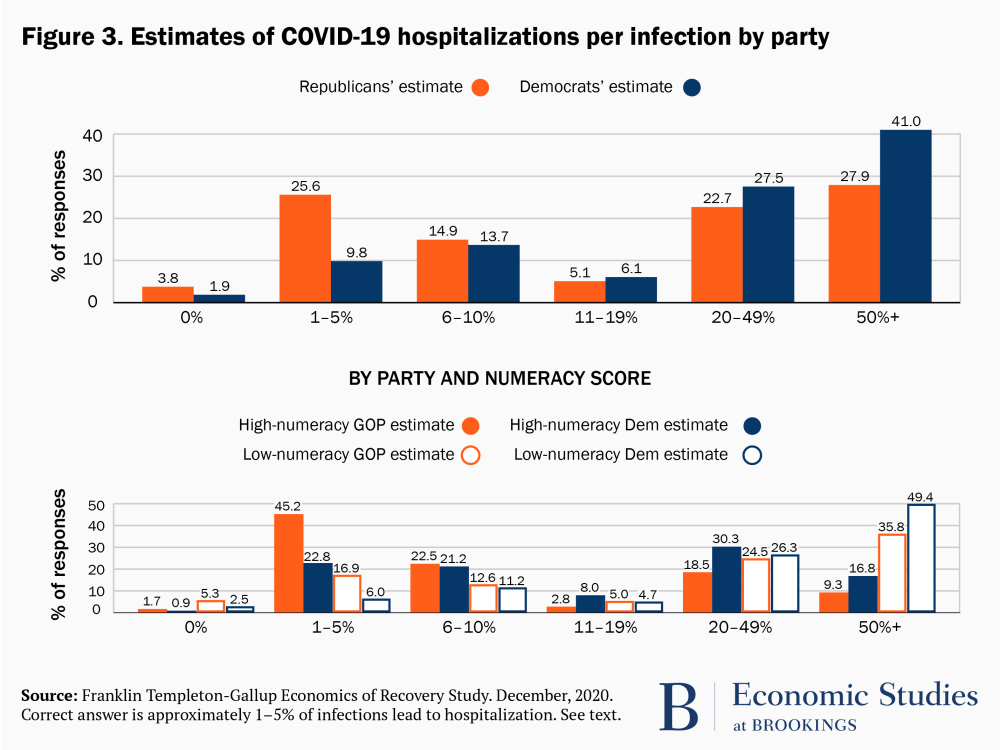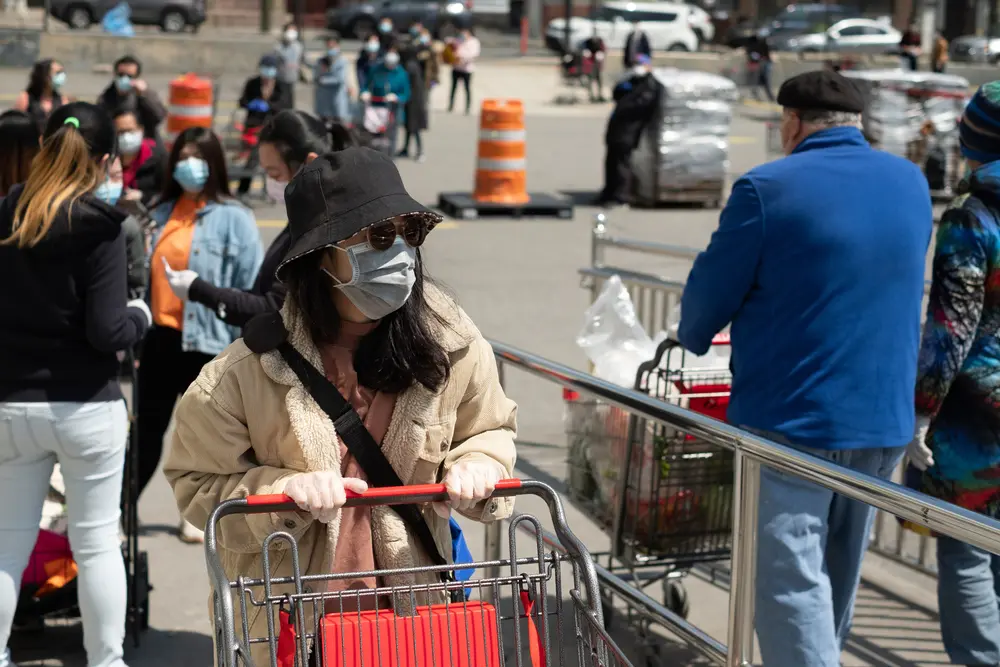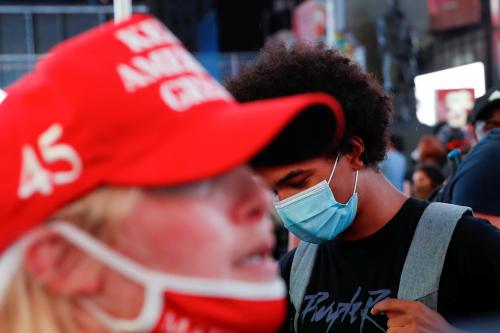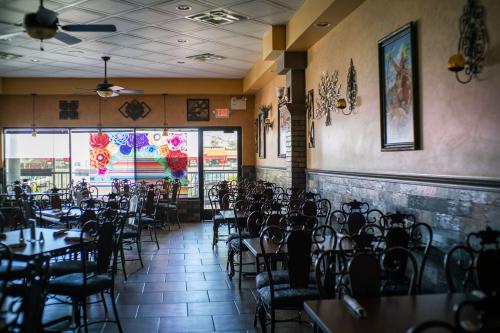Summary
The COVID-19 pandemic has been far reaching in its effects, but knowledge of key facts about the virus and related perceptions of risk associated with it are far from uniform. The varied perception of the facts is caused, at least in part, by varied exposure to relevant information. Using monthly data from 35,000 U.S. adults who responded to the Franklin Templeton-Gallup Economics of Recovery Study, we document significant variation in the understanding of COVID-related facts and concomitant behaviors. In a random controlled experiment that exposes people to different pieces of information, we observe large differences in the likelihood of buying away-from-home services, acceptance of the COVID-19 vaccine, and policy preferences regarding the closing of schools and restaurants.
The distortion of facts undermines public health in several important ways: lower vaccine acceptance—resulting from misperceptions about vaccine safety and efficacy—will result in more transmissions and deaths. Weaker adherence to mask-wearing protocols will likely result in the same.
We also draw attention to the economic costs of distorted policy preferences by showing labor force participation rates are 12 percentage points lower for adults with children in distance learning compared to in-person schooling. Moreover, the consumption of away-from-home services depends in large part on confidence, which is higher among better informed respondents.
Background on the new Franklin Templeton-Gallup study
The COVID-19 pandemic has imposed unusual and extreme circumstances upon consumers and businesses. Businesses face new and sometimes severe restrictions from local or state governments that have varied based on the course of the disease and political pressure. Consumers face tremendous uncertainty about the level of risk they take in performing previously mundane behaviors like eating out, exercising, or travelling. With many schools and workplaces closed or dramatically altered, workers must juggle new familial obligations and safety concerns.
The varied responses to these novel circumstances have transformed economic life during the pandemic. From the first quarter of 2020 to the second, U.S. GDP fell 8%, with massive losses of 41% coming from arts, entertainment, recreation, accommodation, and food services. As disease outcomes shifted over time and across geographic regions, new questions were raised about whether and how consumer-facing businesses could operate and whether consumers would feel comfortable going out, even if permitted.
These were among the considerations that motivated Franklin Templeton to partner with Gallup and launch the Economics of Recovery Study. Starting with a survey of 10,000 U.S. adults in July and 5,000 each month through December, we have sought to better understand what is happening during the pandemic, better anticipate what is likely to unfold, and inform public policy along the way.
One focus of our research is the role of information.
Political affiliation has deeply shaped how people understand and respond to the pandemic. As noted in parallel research from Gallup and others, attitudes about COVID’s risks and willingness to engage in disease-suppression behaviors like social distancing are strongly related to politics, even more so than to local exposure to the virus or demographic factors that predict severe health consequences from the virus like age or pre-existing medical conditions.
We also know from research that social distancing varied even with Fox News-watching Republicans, depending on whether they were more likely to watch Tucker Carlson—who warned against the virus–or Sean Hannity—who dismissed it. Likewise, Marcella Alsan and co-authors have documented that political affiliation is an important predictor of whether or not someone understands basic recommendations from the CDC about how to stop the spread of the virus.
The Economics of Recovery Study contributes to this research by showing that the polarization of the pandemic goes beyond behavior and policy preferences. It is happening at the most basic level: the interpretation of facts. Republicans consistently underestimate risks, while Democrats consistently overestimate them.
These differences are not easy to explain entirely, but they may at least partly be the result of partisan cheerleading in the face of weakly-held belief rather than differences in sincere, considered opinion based on evidence. This interpretation of partisan gaps in factual knowledge is consistent with arguments from the political scientists John Bullock and Gabriel Lenz. If they are right, giving people with different prior-but-weakly-held beliefs the same information could reduce gaps in opinions or policy preferences—or at least have similar effects. We test this in experiments designed to measure how information affects vaccine acceptance, preference for lockdown policies, and expected consumption of away-from-home services. We find compelling evidence that information affects opinions in each of these areas.
We conclude by discussing the implications of this work on public health and especially the economy. Belief about the relative safety of going out in public—measured as confidence in one’s ability to protect oneself—is the strongest predictor of reported consumption of away-from-home services according to an index we created that tracks visits to various business establishments as well as reservations for restaurants, flights, and hotels. Confidence and consumption, in turn, are linked to one’s self-reported media diet and factual knowledge about the pandemic.
Taken together, this evidence suggests the economic damage resulting from the COVID-19 pandemic could have been considerably less severe if the public were exposed to less sensational and distorting media.
Disagreement on basic facts
Risk by age group
When asked to estimate the share of deaths by age group, the average American dramatically overestimates the share of COVID-19 deaths from people aged 24 and younger, putting it around 8%, when in fact it was 0.1% through August and has remained close to that level since. Meanwhile the elderly, those 65 and older, had accounted for 81% of deaths at the time of the survey (and 79% through November). Democrats were further off than Republicans and more likely to overstate the risks to young people, even after accounting for age, race, gender, geographic, and educational differences. The fact that COVID-19 poses a much higher mortality risk to the old than the young was the most clear feature of the virus from very early on; it is remarkable that many Americans remain misinformed about this basic factor and continue to see it through a political lens.

The relative risks of COVID compared to other threats
Meanwhile, Democrats are more likely to correctly understand that COVID can be spread by people without symptoms and more accurately assess the overall mortality risk of COVID-19 as more severe compared to other common causes of death, such as influenza and automobile accidents. In early September, a large portion of Republicans (41%) said that flu had caused more deaths than COVID-19 during 2020, compared to just 13% of Democrats. The President of the United States suggested as much in a tweet in October.1 Even automobile accidents were said to cause more deaths, which is also untrue according to CDC data. Likewise, just over one in three Republicans (37%) deny that it is definitely true that COVID can be spread by people without symptoms compared to only about one in four (23%) Democrats.

The threat of severe harm upon infection
The U.S. public is also deeply misinformed about the severity of the virus for the average infected person. In December, we asked, “What percentage of people who have been infected by the coronavirus needed to be hospitalized?”
The correct answer is not precisely known, but it is highly likely to be between 1% and 5% according to the best available estimates, and it is unlikely to be much higher or lower. We discuss the data and logic behind this conclusion in the appendix.
Less than one in five U.S. adults (18%) give a correct answer of between 1 and 5%. Many adults (35%) say that at least half of infected people need hospitalization. If that were true, the millions of resulting patients would have overwhelmed hospitals throughout the pandemic.
Democrats are much more likely than Republicans to overestimate this harm. Forty-one percent of Democrats and 28% of Republicans answered that half or more of those infected by COVID-19 need to be hospitalized. Republicans were also far more likely to get the correct answer, with 26% correctly identifying the risk compared to just 10% of Democrats.
We considered that basic numeracy may play an important role in people’s ability to correctly understand and report risks, and that is confirmed in the data. We measured numeracy using a two-item modified version of the Berlin Numeracy Test. Of all adults, 60% of respondents answered incorrectly to both items, 26% got one correct, and 15% got both right. Correct answers to the hospitalization item were much higher for those who got both right (34%), but a large partisan gap remained, even among those with high numeracy. Those with low numeracy scores (meaning they missed both items) greatly overestimate risks of hospitalization, regardless of party, but Democrats are still more likely by a large margin.

The Consequences of Misinformation
These errors in factual knowledge appear to have important real-world implications. Those who overestimate risks to young people or hold an exaggerated sense of risk upon infection are more likely to favor closing schools, restaurants, and other businesses.
Meanwhile, those who deny asymptomatic spread or believe the flu or auto accidents are more deadly than COVID-19 are much less likely to wear a mask or isolate themselves from non-household members, according to our survey results. These gaps remain after controlling for demographic characteristics of respondents, such as party identification, gender, age, race, employment status, and education. Those denying asymptomatic spread are 27 percentage points less likely to always wear a mask when indoors and out in public after controlling for these factors, whereas those who attribute more deaths to flu than COVID-19 are 13 percentage points less likely to wear a mask.
The effects of high-quality information
The association between knowledge, policy, and behavior described above does not prove that differences in exposure to information is the cause of differences in knowledge, attitudes, and behaviors. We know that people seek out information that confirms prior beliefs. Yet we also have direct experimental evidence that giving people information affects their attitudes and behaviors, as we describe next, in ways that are important to both the public health aspects of the pandemic and its economic consequences.
Testing how facts about the COVID vaccine affect acceptance
Just over half of U.S adults say they would be willing to get the COVID-19 vaccine, according to Gallup data, though the number appears to be increasing. When asked why they wouldn’t want the vaccine, concerns about a rushed timeline and safety account for roughly half of those unwilling to get it.2
To understand how information affects vaccine acceptance, we randomly assigned people to receive different pieces of information about the vaccine’s side effects, release timing, efficacy, and approval process. Those randomly assigned to receive information that indicated a delayed release (Spring 2020), a more efficacious vaccine, and the absence of side effects were more likely to accept the vaccine. The timing issue only affected Democrats, which suggests Biden’s election may boost acceptance among Democrats.3

Vaccine acceptance will be crucial for a sustained economic recovery. The U.S. economy has proved more resilient than many observers expected: it bounced back strongly in the spring when states began to relax the initial set of restrictions to economic and social activity; it proved resilient to the second wave of contagion in the summer; and it will hopefully weather the most recent resurgence in new cases, too. But we are still far from being back to normal. Our study has revealed that the deployment of an effective vaccine would have the greatest impact on people’s willingness to fully resume normal spending habits and economic activities, while even a marked decline in local new cases and fatalities would have a much smaller impact.
How information affects policy preferences and consumption behaviors
To isolate how exposure to discreet pieces of information may affect attitudes, we randomly assigned people to read short news-like segments, averaging 44 words each. These pieces of content were all accurate summaries of relevant data, advice, or the results of COVID-specific research, and they were chosen to be either reassuring or alarming with respect to the threat from the disease (see Appendix, Table 1 for full list).
We then asked people whether or not they would support various state and local policies that would allow in-person schooling, indoor dining, and other policies. We also asked them how likely they are to consume away-from-home services in the next month, such as eating out.
The results of this experiment show that people exposed to alarming news (about record-high cases or hospitalizations) were significantly less likely to support re-opening restaurants or bars for indoor services and significantly less likely to support re-opening schools (elementary or secondary) or universities to in-person learning.
The experimental conditions produce a large range of opinions, even within political groups. The percentage of Biden voters who support re-opening schools to in-person learning is as low as 43% to as high as 60%, depending on which news segment we assigned them to read before asking them the question. Reporting to people that new cases are at record levels reduced support more than any group, whereas telling people about the American Academy of Pediatrics’ recommendation in favor of in-person schooling resulted in the largest support. The range was just as large for Trump voters (64% to 80%). The implication is that one can easily induce massive gaps in public opinion (a 37 percentage point gap) if Biden supporters are given only alarming news and Trump supporters are given only reassuring news. Yet, the gaps could be as low as 4 percentage points if voters are exposed to messaging that runs against their preconceived bias.

We find that information also has direct effects on consumer behavior. When looking at whether someone is likely to eat out at a restaurant within the next month, the experimental results are similar, with large swings of 14 percentage points (25.5% vs 39.1%) for Biden supporters depending on which news story they are given and 18 percentage points swing among Trump voters (71% vs 53%).

Information diet
People’s “information diet” plays a crucial role here. In the first and second rounds of our survey (conducted July through August), we found that those who get their news primarily from social media had the most erroneous perception of the risk of death by age.
Moreover, by randomly assigning respondents to be presented with different information (COVID-19 deaths by age for only young people vs. deaths by age for young people and old-people), we found that people receiving more complete information about the risks were more willing to reopen daycare centers and restaurants before a vaccine.
In our November and December data round, we found that people who maintain a mixed diet of both liberal and conservative news sources had higher consumption levels (as measured by our consumption index defined below) than those with a more partisan diet. In other words, they were more likely to purchase away-from-home services. This result holds after controlling for political party and other relevant demographic variables.
Overall, our study suggests that better information and a less partisan, more fact-based public debate could help lead more people to both take steps to stop the spread of the virus and to safely engage in more economic activity. Likewise, objective and transparent information about the vaccine’s safety and effectiveness will drive up acceptance and accelerate economic recovery.
Confidence and consumption
Understanding of the pandemic and the relevant scientific facts informs how people are willing to engage in the economy. One of the strongest findings from our survey is that confidence in safety has a very large effect on the economy. In each wave, respondents are asked: “How confident are you that you can protect yourself when out in public from being infected by the coronavirus?” Those who say they are “Very confident” (as opposed to three other options) are far more likely to be spending money in the industries most harmed by the pandemic.
To measure consumption of in-person, away-from-home services we track 14 different activities performed within the past 48 hours, restaurant attendance within the past 24 hours, and whether or not the respondent has made reservations that would indicate future consumption for a flight, hotel, rental car, or restaurant. A consumption index essentially incorporates scores on all of these items and standardizes them across waves to have a mean of zero and a standard deviation of one. Those who say they are very confident consume 0.4 standard deviations above the mean, 0.7 standard deviations above those who say they are not at all confident. The strong relationship between confidence and consumption holds after controlling for many demographic characteristics and attitudes, including local exposure to the disease.

Republicans have been more confident in their ability to protect themselves from the virus than Democrats throughout the pandemic, and that partly explains why Republicans have scored higher on the consumption index. Yet, in the last two waves in November and December, the partisan gap in consumption has become statistically insignificant. This is largely driven by a significant uptick in consumption among Democrats between October and November. In December, after a month of rising cases and hospitalizations across much of the country, the consumption index fell sharply for those in both parties. Previous work from Gallup finds that partisans often change their views on the economy when parties change office.4
The only other variable in our data that is as strong as confidence at predicting consumption is the number of times someone flew or went out to eat before the pandemic. These past-behaviors are closely related to current behaviors, even after controlling for income and other factors. This suggests to us that consumer demand for in-person services in a post-vaccine economy will largely pick up where it left off provided vaccinations increase confidence, which we will discuss next. In the meantime, tracking the confidence in the public’s perceived ability to protect themselves will be closely linked to economic performance.
The economic impact of low-quality information: The case of schools
One issue holding back economic recovery is the increased familial obligations of parents to care for children at home who would otherwise be attending school. When children are out of school, parents must either work from home while trying to oversee and manage their child’s education or leave their job and possibly the labor force.
Apparently, most workers cannot perform their jobs entirely from home. In November, just 40% of workers in the Economics of Recovery Study say they have “always” been working remotely when asked what steps they were taking to stop the spread of COVID-19. That is similar but slightly higher than the share reported in another recent Gallup surveys (33%), and when combined with workers who sometimes work remotely, the total share is similar to what the Census Bureau has found: Many workers (roughly 42%) are unable to work remotely (or at least have not been so far in the pandemic).5
The closing of schools to in-person learning compounds the difficulty many workers have performing their jobs from home. During September and October, 47% of parents report that their child is learning entirely from home, with a lower percentage preferring that arrangement.

Parents whose children are learning from home are much more likely to be out of the labor force (26%)—defined as not working or looking for work—than parents with children attending school in-person (13%). Unemployment rates are also higher for parents whose children are learning from home relative to those who are doing schooling either partly or entirely in-person.
The combined impact of school closures and higher unemployment has also exacerbated economic and social disparities. Workers with lower education levels have been disproportionately affected by job losses, as they tend to work in the hardest-hit service sectors; and children from lower-income households have suffered a more severe setback in terms of learning gap with the switch to remote learning.

Among all U.S. adults, support for in-person K-12 schooling ran at 60% in our December survey, which has not changed much since we started tracking this in October. This support exceeds that for in-person dining (49%), yet in many areas, local policies have prioritized dining over schooling. Our survey also suggests that the deployment of an effective vaccine will boost support for in-person schooling further.
As we await the distribution of the vaccine, policy makers should consider that the evidence so far finds very low COVID-19 infections among enrolled school children (and contagion rates for their teachers that are similar to non-teachers), as Emily Oster has discussed. These considerations have led a number of countries to reopen schools. As our experiment reveals, this is another area where providing more complete and balanced information could facilitate an approach to schools opening that would bring benefits to both working parents and children—especially those from disadvantaged backgrounds. We have found that informing adults about Emily Oster’s work leads to a significant increase in support for re-opening schools.
Putting it all together
We believe the economy will continue to struggle until a vaccine becomes widely distributed. COVID-19 eradication has not occurred in any large-developed country, most of which are dealing with high levels of infection.
On the other hand, areas in the Northeastern United States and parts of Europe and Asia have managed to contain hospitalizations and deaths at much lower levels than they experienced in April without mandating business closures, with a combination of sensible regulations, mask-wearing, and mostly voluntary social distancing, accompanied by clear guidelines. We believe this is the strategy needed more broadly until there is a vaccine.
The most important lesson from our research is that a well-informed public, freed from both exaggerated fear and trivialization of a dangerous threat, is more likely to support optimal policies and engage in the behaviors needed to both maintain safety and avoid unnecessary economic damage. Tracking the public’s attitudes and behaviors on COVID-19 provides a tighter grasp of what to expect in a highly uncertain situation.
Sonal Desai is Chief Investment Officer of Franklin Templeton’s Fixed Income Group. Other than the aforementioned, the authors did not receive financial support from any firm or person for this article or from any firm or person with a financial or political interest in this article. Other than the aforementioned, they are currently not an officer, director, or board member of any organization with an interest in this article. Franklin Templeton’s legal and compliance departments had a right to review this piece prior to publication.
This material is intended to be of general interest and should not be construed as individual investment advice or a recommendation to buy, sell, or hold any security or to adopt any investment strategy.
APPENDIX
Estimating the true rate of hospitalization per infection
The COVID Tracking Project (CTP) reports cumulative hospitalizations at 593,679 (as of December 8, 2020), but they caution that only two-thirds of states report cumulative hospitalizations, so this figure is certainly an undercount. The CDC collects data from a sample of hospitals in 14 states and reports cumulative hospitalizations per person for the entire network of hospitals. As of November 28, these figures suggest that 869,055 people have been hospitalized. Conveniently, that is roughly the number one would get by taking the CTP estimate and dividing by two-thirds (to account for missing states).
Estimating cases is also not entirely straightforward. It is clear that the number of confirmed COVID-19 cases undercounts the actual number by a large margin for several reasons: 1) many people infected with the virus do not develop symptoms; 2) early in the pandemic, testing was either not readily available nor always sought after, even by people with symptoms; 3) antibody tests—which can be positive long after someone is infected and recovered—show that many people developed the virus but were never confirmed with a positive test for the active virus.
Perhaps the best currently available estimate is from a large-scale sample of blood from dialysis patients who had to draw their blood for routine treatment (for kidney disease). After adjusting for the characteristics of the dialysis population Dr. Shuchi Anand and her coauthors estimated that 8.3% of the U.S. adult population was infected by COVID-19 through July of 2020. If extended to children, this implies 27.4 million infections at a time when hospitalizations were 469,250, as estimated by the CDC data (and 305,247 by CTP). This leads to a hospitalization estimate of 1.7% for every infected person. Using various modelling techniques that attempt to account for under-reporting, Heather Reese and colleagues from the CDC estimate that there have been 53 million infections and 2.4 million hospitalizations, implying a hospitalization rate of 4.5%.
Coincidentally, the CDC hospitalization rate estimate of 4.5% is close to the number one gets from simply dividing cumulative hospitalizations reported by the CTP by confirmed infections through December 8, 2020. That number is 4% and requires no prior knowledge about the data quality issues described above.
| Table 1. Information content randomly shown to respondents in December, 2020 |
| 1. The American Academy of Pediatrics—a leading group of physicians who guide health policy regarding children—has issued the following statement: “The AAP strongly advocates that all policy considerations for the coming school year should start with a goal of having students physically present in school. The importance of in-person learning is well-documented, and there is already evidence of the negative impacts on children because of school closures in the spring of 2020.” |
| 2. As of October 31, 2020, the Centers for Disease Control (CDC) reports that there have been 192 deaths from the coronavirus for U.S. children aged 14 and younger, which accounts for 0.09% of all deaths from the virus. |
| 3. According to data from the Centers for Disease Control (CDC), 2,715 Americans died per day from the coronavirus in the seven-day period ending April 22. Since then, the most deaths over a seven day period occurred on August 10, averaging 1,154 per day. The week ending November 10th saw 957 deaths per day. |
| 4. November 13th saw a daily record for number of new confirmed coronavirus cases in the United States at 171,376. |
| 5. Economist Emily Oster of Brown University has analyzed coronavirus data from a large number of schools and counties across the country. As of early October, the number of confirmed cases per day was 7 for every 100,000 students and 14 for every 100,000 teachers. These numbers are similar to rates in the neighboring county. Dr. Oster’s analysis suggests that schools are not major sources of COVID-19 spread. |
| 6. In Missouri, two coronavirus-infected hair stylists saw 139 clients. None of the clients developed symptoms, and of the 67 tested, all tested negative for the coronavirus. Both stylists and clients wore masks throughout the encounter. CDC officials concluded that masks prevented the spread of the virus. |
| 7. In a flight from Italy to South Korea in April, 6 passengers unknowingly had the coronavirus, but they infected only one of 299 passengers–a woman who likely used a bathroom after an infected person, according to a report from South Korea’s Centers for Disease Control. All passengers were wearing masks. |
| 8. There are currently 77,000 Americans in the hospital with the coronavirus. That is higher than the previous peak of 60,000 hospitalizations in April. |
| 9. According to the U.S. Bureau of Labor Statistics, the unemployment rate in October is 6.9%. |
-
Footnotes
- Merrit Kennedy, “Facebook, Twitter Take Action After Trump Falsely Claims Flu Deadlier Than COVID-19,” National Public Radio, October 6, 2020 https://www.npr.org/sections/latest-updates-trump-covid-19-results/2020/10/06/920787737/facebook-twitter-take-action-after-trump-falsely-claims-flu-deadlier-than-covid-
- RJ Reinhart, More Americans Now Willing to Get COVID-19 Vaccine (Gallup, November 17, 2020), https://news.gallup.com/poll/325208/americans-willing-covid-vaccine.aspx
- Jonathan Rothwell, “New Experiment Shows How to Boost COVID-19 Vaccine Acceptance” (Gallup, October 30, 2020)
- Justin McCarthy, “2017 Partisan Gap in Economic Confidence One of the Largest” Gallup, February 2, 2018 https://news.gallup.com/poll/226649/2017-partisan-gap-economic-confidence-one-largest.aspx
- [1] U.S. Census, Household Pulse Survey, November 11-23, 20202, https://www.census.gov/data-tools/demo/hhp/#/?measures=TWR. These data show that 88,000 U.S. adults reported that they substituted at least some of their in-person work for telework during the pandemic. That amounts to 58% of the employed population of 150,000, as reported by the U.S. Bureau of Labor Statistics for November, https://www.bls.gov/web/empsit/cpseea03.htm. Using data from the Gallup Panel, Gallup reports that 55% of U.S. adults are sometimes or always working remotely, Megan Brenan, “COVID-19 and Remote Work: An Update,” October 13, 2020, https://news.gallup.com/poll/321800/covid-remote-work-update.aspx.







